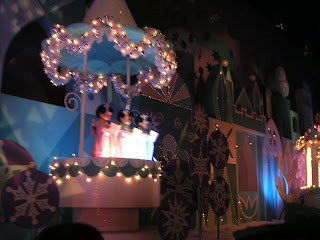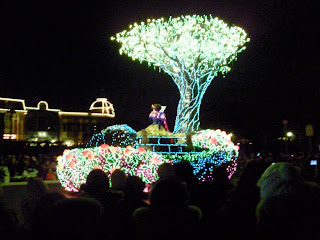
Thursday, December 31, 2009
Tuesday, December 22, 2009
Brown Eyed Girls - Abracadabra MV
Another red hot hit from Korea. The all girls group - Brown Eyed Girls is really milking their femine sexuality to full maximum!
Monday, December 21, 2009
Beyonce featuring Lady Gaga - Video Phone
What happens when you put 2 biggest "It" Queens together in a music video? Well, we definitely get a stylish music video of course!
Lady Gaga, after being stripped off of her OTT persona, gadgets and make-up, can still upstage our dear dancing queen, Beyonce, any time. Well done.
Thursday, December 17, 2009
Anniversary & Christmas Gift - A Bally Tote Bag!!
Wednesday, December 16, 2009
Lady Gaga - Bad Romance
This Queen is really something! Till now, she has continued to enthrall everyone with her dress sense and performances.
Saturday, December 12, 2009
Charice Pempengco @ Oprah Winfrey Show Performing "Note to God"
Was channel-surfing on cable TV when Oprah came on. Was I glad that I watched this episode otherwise I would have missed this power-lunged emotionally charged performance.
Written by Diane Warren and produced by David Foster (what could possibly gone wrong with such a coupling?), Note to God is definitely a hit in the making!
Charice did not let the powerhouses down with her heart-wrenching performance! Great vocals there.
Note to 2 other asian ladies trying to break into US market:
Sun Ho - You may also have the support of David Foster and a string of No.1s on the Billboard Dance Charts, yours truly is not a singing material. Good luck to you.
Coco Lee - You may also have been dubbed power-lunged and you absolutely relished this compliment but I am sorry, darling. You are nowhere near Charice, and actually, you ain't that power-lunged. Listen to her and you will know, what is singing all about.
Monday, December 07, 2009
Wednesday, December 02, 2009
Junctional Tachycardia
Background
Cardiac rhythms arising from the atrioventricular (AV) junction occur as an automatic tachycardia or as an escape mechanism during periods of significant bradycardia with rates slower than the intrinsic junctional pacemaker.
The AV node (AVN) has intrinsic automaticity that allows it to initiate and depolarize the myocardium during periods of significant sinus bradycardia or complete heart block. This escape mechanism, with a rate of 40-60 beats per minute, produces a narrow QRS complex because the ventricle is depolarized using the normal conduction pathway. An accelerated junctional rhythm (rate >60) is a narrow complex rhythm that often supersedes a clinically bradycardic sinus node rate. The QRS complexes are uniform in shape, and evidence of retrograde P wave activation may or may not be present.
Less commonly, the AV junction develops abnormal automaticity and exceeds the sinus node rate at a time when the sinus rate would be normal. These junctional tachycardias are most often observed in the setting of digitalis toxicity, recent cardiac surgery, acute myocardial infarction, or isoproterenol infusion.
Pathophysiology
The junctional rhythm initiates within the AV nodal tissue. Accelerated junctional rhythm is a result of enhanced automaticity of the AVN that supersedes the sinus node rate. During this rhythm, the AVN is firing faster than the sinus node, resulting in a regular narrow complex rhythm. These rhythms may demonstrate retrograde P waves on ECG findings, and the rates can vary from 40-60 beats per minute.
Changes in autonomic tone or the presence of sinus node disease that is causing an inappropriate slowing of the sinus node may exacerbate this rhythm. Young healthy individuals, especially those with increased vagal tone during sleep, are often noted to have periods of junctional rhythm that is completely benign, not requiring any intervention.
Rarely, the AVN develops enhanced automaticity and overtakes a "normal" sinus node. This occasionally is observed in digitalis toxicity, following cardiac surgery (typically valve replacement), during acute myocardial infarction, or during isoproterenol infusion.
Frequency
United States
Junctional rhythms are common in patients with sick sinus syndrome or in patients who have significant bradycardia that allows the AV nodal region to determine the heart rate.
Mortality/Morbidity
The heart rate during a junctional rhythm often determines whether the patient has symptoms.
Presence of AV disassociation can lead to symptoms in patients because of atrial conduction and subsequent contraction when the tricuspid valve is closed (ie, canon a waves).
Periods of junctional rhythm are not necessarily associated with an increase in mortality. If an obvious cause is present, such as complete heart block or sick sinus syndrome, then the morbidity or mortality is directly related to that and not to the junctional rhythm mechanism, which is serving as a "backup rhythm" during the periods of bradycardia. Accelerated junctional rhythms may be a sign of digitalis toxicity.
Age
This rhythm may occur in persons of any age. Junctional rhythms during sleep are common in children and in athletic adults.
Clinical
History
Junctional rhythms may be accompanied by symptoms or may be entirely asymptomatic.
Palpitations, fatigue, or poor exercise tolerance: These may occur during a period of junctional rhythm in patients who are abnormally bradycardic for their level of activity.
Dyspnea: Sudden onset of symptoms and sudden termination of symptoms may occur, especially in the setting of complete heart block.
Presyncope (near syncope): The underlying cause of the junctional rhythm is the most significant predictor of symptoms. For instance, AV dissociation with complete heart block, defined as an atrial rate that is faster than the junctional escape rate, is more likely to cause symptoms than AV dissociation with a sinus rate slower than the competing junctional pacemaker. Additionally, syncope or presyncope may occur from an acute decrease in heart rate.
Physical
A predominant junctional rhythm may be associated with structural heart disease, sick sinus syndrome, or both, during which the junctional escape rhythm supersedes the sinus rate and provides a safety mechanism.
During a predominant junctional rhythm, the pulse usually is regular and the heart rate may be within reference range. Frequently, the junctional rhythm is 40-60 beats per minute.
Prominent jugular venous pulsations (ie, cannon a waves) may be present due to the right atrium contracting with a closed tricuspid valve.
Subscribe to:
Posts (Atom)
USA: President Donald J. Trump Restricts the Entry of Foreign Nationals to Protect the United States from Foreign Terrorists and Other National Security and Public Safety Threats
President Donald J. Trump signed a Proclamation to protect the nation from foreign terrorist and other national security and public safety t...
-
A report by the Search for Extraterrestrial Intelligence (SETI) in the United States said that there are three giant spaceships which are he...
-
The Minister for Justice and Equality, Charlie Flanagan TD, has published ‘Immigration in Ireland: Annual Review 2018’. Providing the key...






















